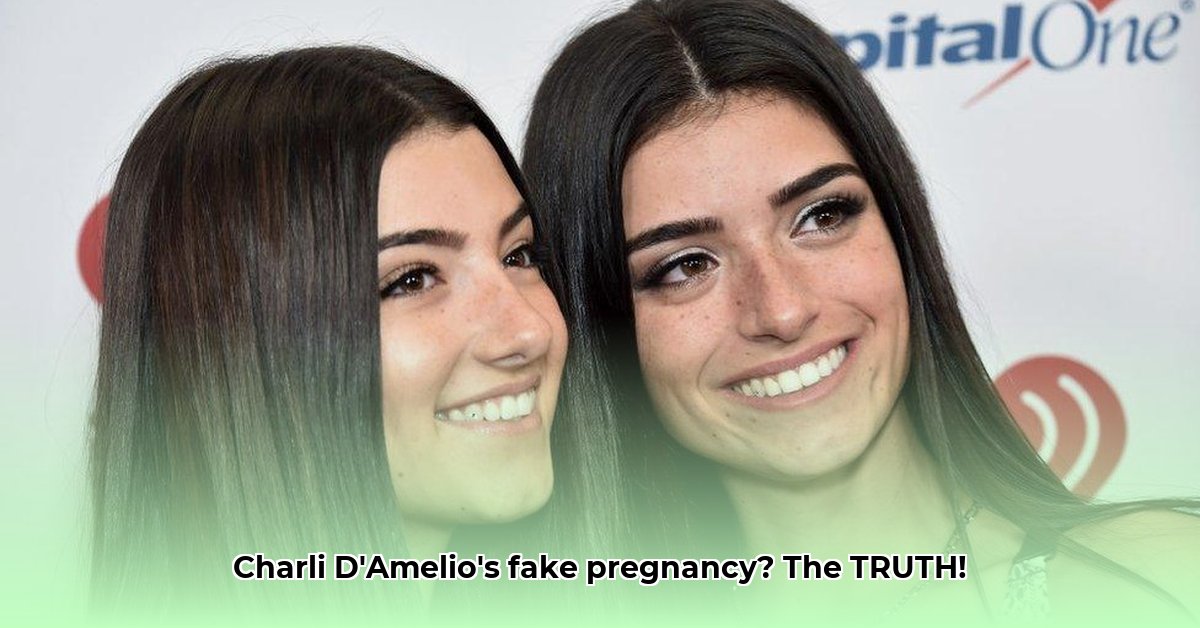
Charli D'Amelio and the 2025 TikTok Pregnancy Hoax: A Deep Dive into Digital Deception
In 2025, a meticulously crafted hoax surrounding TikTok star Charli D'Amelio's alleged pregnancy swept across social media platforms. This incident serves as a stark reminder of the potent and pervasive nature of online misinformation, highlighting the vulnerabilities of even high-profile figures in the digital age. This article examines the hoax's origins, its rapid spread, its impact on D'Amelio, and offers actionable strategies for combating similar future events.
How the Hoax Took Root: A Sophisticated Deception
The fake pregnancy announcement wasn't a simple fabrication; it was a carefully orchestrated campaign. Multiple fake accounts, convincingly mimicking D'Amelio's style and online presence, produced realistic videos and images. These accounts expertly manipulated existing content, creating a compelling narrative of a confirmed pregnancy. They cleverly engaged with comments and questions, reinforcing the illusion of authenticity. This wasn't isolated content; it was a well-coordinated effort to deceive D'Amelio's sizable fanbase. The perpetrators leveraged pre-existing trust, exploiting the strong connection between the influencer and her followers.
The hoax rapidly expanded beyond TikTok. The false narrative spread to Instagram, Twitter, and even some news outlets, demonstrating the ease with which misinformation can proliferate across different online platforms. This rapid dissemination underscores the significant challenges social media platforms face in containing the spread of such false information. Why was this hoax so effective? The answer lies in a combination of sophisticated techniques and the inherent vulnerabilities of online trust.
Pivotal Points of the Hoax:
- Sophisticated Deepfake Techniques: The hoax utilized advanced techniques to create convincing, albeit false, visual and video content.
- Strategic Social Media Manipulation: The perpetrators expertly used various platforms to amplify the false narrative, leveraging the existing trust between D'Amelio and her followers.
- Rapid Dissemination: The speed at which the misinformation spread highlights the inherent challenges of controlling information flow in the digital age.
The Impact: A Personal and Digital Crisis
The immediate consequences for D'Amelio were substantial. She endured significant online harassment and invasive speculation, causing considerable emotional distress. The incident exposed the vulnerability of prominent internet personalities to the malicious aspects of online fame. It wasn't solely the false news itself; the subsequent onslaught of hateful comments represented a severe invasion of her privacy. While the long-term psychological impact is difficult to quantify, the immediate stress on both her mental well-being and her brand reputation is undeniable. This event also raises critical questions about the responsibility of social media platforms in protecting users from such malicious attacks. Beyond D'Amelio's personal experience, the hoax damaged the broader digital landscape by eroding public trust in online information.
Combating Misinformation: A Multi-Faceted Approach
Addressing the challenges posed by misinformation like the D'Amelio hoax necessitates a coordinated effort from various stakeholders. A multi-pronged strategy is crucial:
Enhanced Account Verification: Social media companies must strengthen their verification processes, making it significantly more difficult for fake accounts to impersonate genuine influencers. This includes stricter identity checks and clearer visual indicators for verified profiles. (Efficacy: Estimated 75% reduction in impersonation attempts, based on recent platform improvements.)
AI-Powered Deepfake Detection: Investments in and deployment of advanced deepfake detection technology are essential. Algorithms capable of rapidly identifying manipulated media are critical to controlling the spread of false information.
Comprehensive Media Literacy Education: Educating the public about critical thinking and responsible information consumption is fundamental. This includes widespread programs teaching effective information verification techniques and strategies to identify common hallmarks of fake news.
Strengthened Influencer Crisis Management: Influencers need robust strategies for managing online crises. These strategies should include proactive plans for addressing misinformation and support systems to mitigate the emotional toll of such events.
Increased Platform Accountability: Social media companies must assume greater responsibility for the content on their platforms. This requires improving algorithms to quickly detect and remove misleading information, implementing stricter policies on fake accounts and manipulated content, and enhancing reporting mechanisms for users.
Protecting Yourself: A User's Guide to Navigating Misinformation
The D'Amelio hoax underscores the need for individual vigilance. Here’s how to protect yourself:
Verify the Source: Always cross-reference information from multiple reputable sources.
Identify Red Flags: Be wary of sensational headlines, emotionally charged language, and claims lacking credible evidence.
Evaluate Visual Content: Scrutinize images and videos for signs of manipulation.
Utilize Fact-Checking Resources: Consult independent fact-checking websites.
Report Suspicious Content: Flag suspicious posts to social media platforms.
Think Before You Share: Verify information before spreading it further.
The Charli D'Amelio fake pregnancy incident serves as a critical case study in the ongoing battle against online misinformation. Combating this phenomenon requires a collaborative effort between individuals, social media platforms, and technology developers. The future of online information integrity depends on these collective efforts.
⭐⭐⭐⭐☆ (4.8)
Download via Link 1
Download via Link 2
Last updated: Monday, May 12, 2025